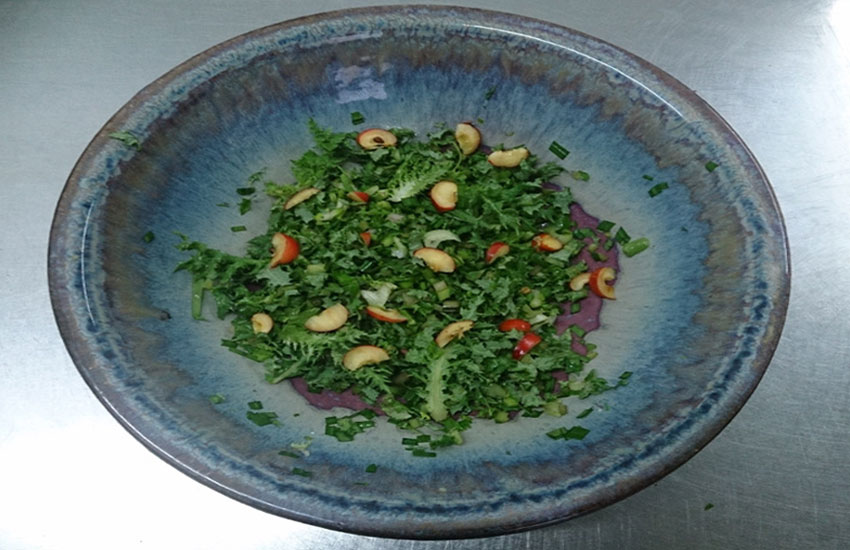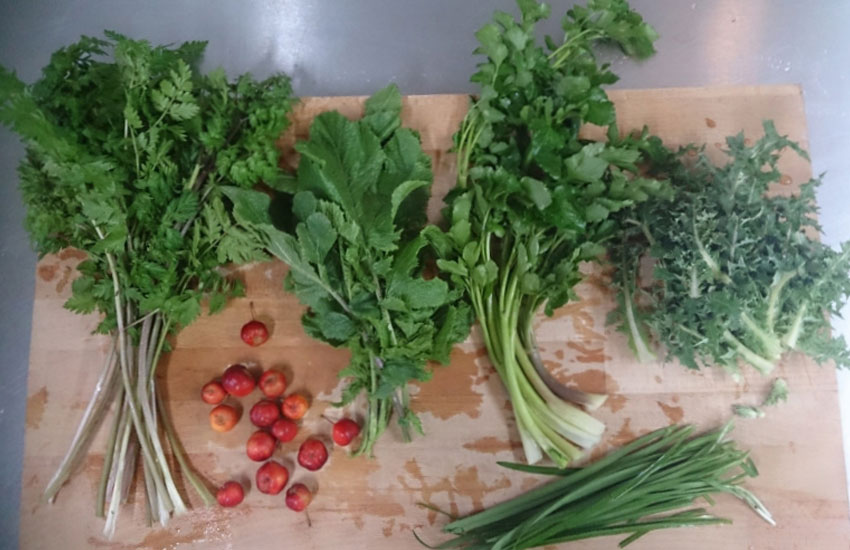...and reverse a 300 hundred year unjust pro-celery food fad while you are at it!
A few weeks ago I was pottering around in my kitchen on a Sunday morning and started picking at some leftover coleslaw. Finding it a bit lacking in flavour I looked around to see what was to hand that might spice it up a bit. There on the kitchen surface was a bag of young alexanders leaves, something which up to know I had always steered clear of using in salads. However there is a clear link between celery and alexanders, as alexanders owe their descent into culinary obscurity, having once been a mainstream kitchen garden staple, to the arrival on the culinary scene a few hundred years back of cultivated celery. The link between celery and alexanders is obvious when considered as veg: both make excellent base vegetables for soups, braises, stock and mirepoix. I would assume that many of the standard uses of cooked celery replaced the former uses of celery and I certainly don’t think this happened because celery is the better vegetable. To my mind it is much more a case of a food fad that stuck, yet in spite of alexanders having slowly been eclipsed by cultivated celery for the last 3 centuries, it was a staple vegetable in Britain for 16 centuries prior to that.
This means the pro alexanders food fad lasted for 13 centuries longer than the present one for celery… I have now begun to wonder whether the current uses for raw celery also derive from former popular uses for alexanders. The flavour is undoubtedly much stronger but when you consider other strong and pungently flavoured plants which were once popular in England, it doesn’t seem too far-fetched to think that raw alexanders could have had a wide spectrum of uses. Rock samphire, the original samphire, for which marsh samphire was at one time considered an inferior substitute, was once popular enough to drive pickers to gather from dangerous places half way up cliffs, everywhere else having been picked out. Tansy, a strong flavoured herb too pungent for most people’s palate today in anything but the most cautious of uses, was once used in much of the north of England to flavour a sweet omelette known as tansy pudding, eaten at Easter.
To return to my left over coleslaw story, which gave rise to this whole train of thought… I cautiously added a few finely chopped pieces of alexanders stalk to my bland leftover coleslaw and tried a mouthful. Much to my surprise I couldn’t taste it so I added more, ending up adding quite a substantial amount of both stalk and leaf before I reached the point that the aromatic and bitter flavours of the alexanders could hold their own against the backdrop of cabbage, carrot, onion, salt and mayonnaise. When this point was reached, both the bitterness and myrrh like aromatic quality where entirely pleasant, cutting through the sweetness and fattiness of the other ingredients.
This coleslaw experiment then started off a whole train of thought and experimentation with regard to other winter wild plants that might make a good hearty, crunchy salad. Lots of the plants which survive the colder and harsher winter weather are either bitter, crunchy, aromatic or otherwise strongly flavoured. These crunchy textures are a great resource for making very distinctive winter salads. Fear of putting lots of strong flavours together lest they prove overpowering could easily put you off making a salad made solely from such ingredients. But in fact they can combine to make a flavoursome whole that is complex and (if you get it right) balanced. One of several permutations of such a salad are illustrated below, using 6 ingredients but many other combinations using, in addition to the ingredients used in this one, such things as bristly ox-tongue, wild lettuce and smooth sow thistle (lettuce family plants which add lettuce / chicory like characteristics, as the prickly sow thistle does in the salad illustrated); stalks (mainly) of brassicas such as wild cabbage, rape greens, white mustard, charlock and sea radish (adding variable amounts and kinds of mustard/ wasabi flavour); and crunchy leaf stalks of carrot family aromatics such as wild celery, wild fennel, hogweed and wild carrot. What you end with is wild winter on a plate, with the structure, texture and flavours of these hardy plants that have made it through this harsh Feb season, many of them thriving and at their peak, when most of the mollycoddled cultivated salad plants are either huddling in their heated ploy tunnels or else are here now only as seeds waiting for spring to come!


